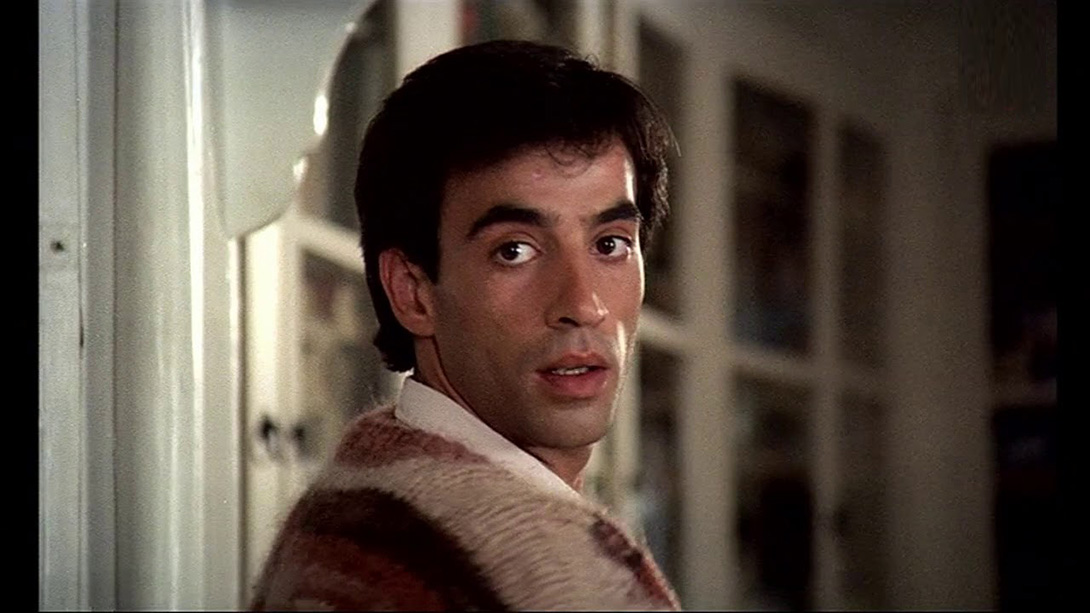THE LAST FILM WE ALL WATCHED TOGETHER AS BASQUES
Imanol Uribe dared to question the concepts of gender and nation 40 years ago in La muerte de Mikel, a must-have component of filmmaking during Spain’s transition to democracy.
Mario Onaindia wrote that La muerte de Mikel was “the last film we all watched together as Basques – some filled with hope in relation to people’s reactive capacity, and others fearing that individual freedom would drive collective demands into oblivion. After that, Basque cinema stopped discussing Euskadi, and films are given labels before they are screened”.
It has been 40 years since it was first screened on 12 February 1984. That Euskadi, plunged into the turmoil of industrial reconversion, scourged by the terrorism of ETA which left 33 people dead that year, bears no resemblance to the Basque Country of today. Imanol Uribe’s third feature film emerged at just the right juncture to become a social phenomenon. The Ministry of Culture’s official revenue figures do not lie: the film brought in 1.2 million cinema-goers, and earned over 1.7 million euros. Its main actor, Imanol Arias, who began the Anillos de oro series during the shoot, was catapulted to fame.
Born in El Salvador, Uribe became something of an official chronicler of ETA’s terrorism thanks to two quasi-documentary films: El proceso de Burgos (1979) and La fuga de Segovia (1981). The real-life case of an Oiartzun pharmacist associated with Herri Batasuna, allegedly tortured to death, was the inspiration for a script co-written along with José Ángel Rebolledo. A political thriller with intolerable doses of ghoulishness for the epoch, which opened with the main character’s coffin during his funeral at Lekeitio’s Asunción de Santa Maria church. Who killed Mikel, the local pharmacist?
Cinema-goers at that time were not ready for a mirror-image film addressing issues as shocking as the Basque nationalist left’s homophobia, police brutality, the Basque matriarchate and Basque nationalists’ craggy provincial mindset. Quite a list. A nationalist left, ostensibly progressive, but still bogged down in the tired old moralistic postulates of Francoism. Forty years on, Uribe’s daring astounds us, with provocative scenes such as a session of cunnilingus terminating with a brutal gnaw at the vulva, or a transvestite wearing an Athletic Bilbao football shirt (José Antonio Nielfa, La Otxoa).
Mikel (Imanol Arias) is stifled by a woman he feels no desire for (Amaia Lasa) and a bourgeois mother racked by the knowledge that she is a laughing stock in the village (Montserrat Salvador). The first man he sleeps with is a transvestite he dares to be seen with in public (Fernando Telletxea “Fama”). Coming out of the closet forces him off Herri Batasuna’s list of candidates in the municipal elections, with no explanations proffered. “You’re a pack of shitty priests”, rasps the character, who dies by his mother’s hand when he decides to leave the village. In an exercise of hypocrisy at the highest possible level, the nationalist hordes hold a demonstration crying “Mikel, gogoan zaitugu!” [Mikel, we remember you!]
This is the same double standard that led ETA to justify the murder of small-time dealers in a macabre anti-drugs campaign, while the “young pups” bent on street violence got wasted on marijuana. Curiously, as Imanol Uribe recalls, at the time critics of media sympathetic to the nationalist left such as newspaper Egin did not condemn the film’s message of disillusionment, but the fact that so few people were seen in the Lekeitio demonstrations. This was simply because the budget did not stretch to paying for any more extras.
La muerte de Mikel was intended as “a general denunciation of the intolerance of Basque society, from the matriarchate to PNV-Basque Nationalist Party, and from Herri Batasuna to the Civil Guard”, was the summary by Santiago de Pablo in his essential essay Creadores de sombras. This general social criticism may have been the reason it was a success although, four decades on, some omissions may also be appreciated, since it depicts only the violence of the police, and not the violence of ETA. As Casilda de Miguel rightly points out in Los cineastas. Historia del cine en Euskal Herria, the search for a local identity on which Uribe’s story is based “entails doubts cast on the concepts of gender and nation”.
The poster advertising La muerte de Mikel stated it categorically: “The most universal Basque film”. This classic example of Spanish films during the Transition was the first in which many Basque actors used their own voice on screen and were not dubbed by actors, contrary to the custom at the time. Alberto Iglesias composed his second soundtrack for cinema after La conquista de Albania, while Javier Aguirresarobe headed up the photography and was also involved as producer. Imanol Uribe’s next film, Adiós, pequeña, was shot in Bilbao, but this time with no grant from the Basque Government. Basque cinema let its most successful director go.
Oskar Belategui





